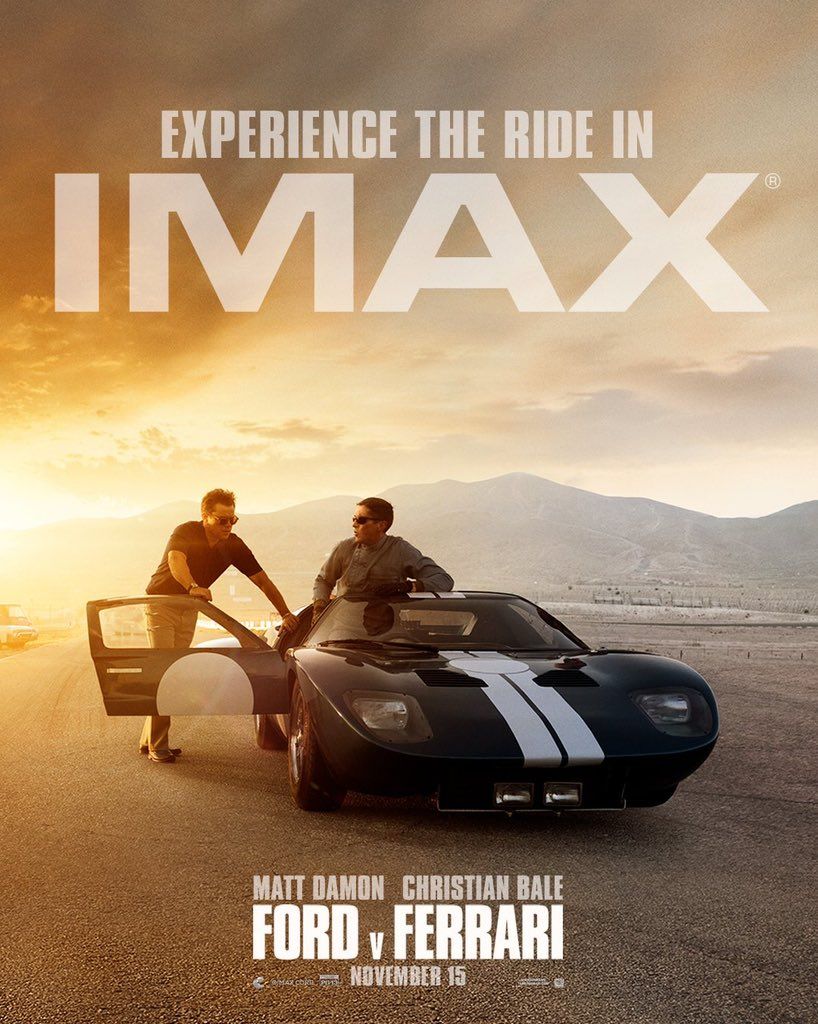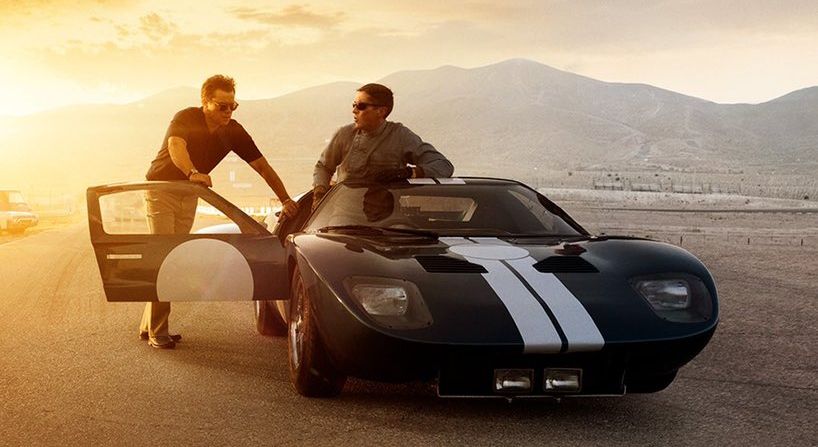"This is David vs. Goliath vs. Goliath," said leading actor Christian Bale that plays veteran sports car racing ace Ken Miles in the upcoming 'Ford v. Ferrari' movie that'll park in a cinema near you from November 15. It's a story about racing as much as it is a story about business affairs that become personal and about what you can achieve if you're willing to throw infinite amounts of cash at a problem. It's the story about Ford's first outright success in the 24 Hours of Le Mans that ended a six-year winning spree for Scuderia Ferrari.
'Ford v. Ferrari' (or 'Le Mans '66' in Europe and other places) is the first movie to take us back to Le Mans since 2003's Michel Vaillant. Those scenic country roads in France that play host to the most famous sports car endurance race in the world over a weekend in June were first showcased to moviegoers almost 50 years ago when Steve McQueen put his fortune and reputation on the line to create 'Le Mans'. 'Ford v. Ferrari' looks at the 1966 edition of the race but you can't tell that by looking at the recently released IMAX poster. So, why are Bale and co-star Matt Damon seen propped up against a weird-looking Ford GT40?
The legendary battle between Ford and Ferrari that got an entire generation hooked on sports car racing will finally see its story told on the big screen when 'Ford v. Ferrari' hits the big screen. While not based on A.J. Baime's 'Go Like Hell' book, the film tells the story of Shelby American's humble beginnings as a builder of the Shelby Cobra, through to its break with the Cobra Daytona Coupe in '65 and the Ford GT40 the year after that.
The Ford GT40 on the IMAX Poster Sure Isn't the 1966 Ford GT40 Mk. II that won Le Mans
The car you see on the poster looks very much like one of the early iterations of the GT40, right after the team ditched the elongated headlamp setup in favor of the more straight-edged design first seen in its infancy during the Le Mans Test Day on April 19th, 1964, when the car ran for the very first time. This isn't an issue in and of itself.
In 1964, the year of the GT40's debut, less than a year after Ferrari rebuked Ford, the new FoMoCo GT car ran in a mostly white livery with only the top part of the front deck being painted in blue, besides the blue stripes on the rocker panels. This livery was first seen when the GT40 made its competition debut at the 1964 Nuerburgring 1,000-kilometer race where the car was fast but ferociously unstable at speed (rain throughout the weekend didn't help) and ultimately retired 16 laps in when the suspension failed.
The GT40s only ever ran in white with the blue front deck in '64. In fact, not even Shelby American ran that now-famous combo of white LeMans stripes over Guardsman Blue until very late into 1964. For most of the season, the FIA-spec Cobra Roadsters were painted in Viking Blue with a stripe drawn across the nose of the car horizontally, each car featuring a stripe of a different color to set them apart during races. The Cobra Daytonas, on the other hand, did sport a pair of stripes over their Viking Blue bodyworks but those stripes were significantly narrower than the ones seen in 1965.
The GT40s raced in Guardsman Blue for the first time in 1965 when Shelby was named the head of the program, replacing Wyer. The move stemmed from the Blue Oval's disappointment over the string of painful failures recorded by Ford Advanced Vehicles throughout its debut season (all GT40s were out before the 12th hour at Le Mans while Ferrari won and retirement was on the cards at Reims too, as well as at Nassau). As the Fords began to be campaigned by Shelby American instead of FAV, they took on their new colors.
What Led Up to Ford and Ferrari's Big Beef?
As you probably know, Ford decided to enter sports car racing, something unfamiliar to the Blue Oval's motorsport people, after negotiations between Ford and Ferrari that would see the American company purchase a half share in the Maranello-based sports car maker fell through. Ford wanted to increase its footprint in the world of sports cars and racing all at once and thought there's no better way of doing that than by buying into the world's most famous automaker: Ferrari.
After nine months of tough negotiations, Henry Ford II was ready to dispatch $10 million to Il Commendatore and start building jointly developed cars, as reported by Time Magazine in May of 1963. However, while Time was writing about a V-12-engined 'Ford-Ferrari' sports car, Ford itself released a newswire two days prior, on May 22nd, 1963, saying that "Ford Motor Company and Ferrari wish to indicate, with reference to recent reports of their negotiations toward a possible collaboration that such negotiations have been suspended by mutual agreement."
The reason behind Enzo's decision to kick Ford to the curb out of the blue seems to lay hidden in the contract Ford readied for Ferrari to sign.
Given Enzo's love for racing, he saw this line as a grave enough insult to warrant the immediate shutdown of any and all negotiations between the two parties. As it happened, Henry Ford II, a man with a similarly large ego, took the matter personally too and immediately plotted his revenge.
The first step was the formation of the 'High Performance and Special Models Operation Unit' in June, tasked with building "a racing GT car that will have the potential to compete successfully in major road races such as Sebring and Le Mans." Roy Lunn and Carroll Shelby were among the first men appointed to this unit but it was Eric Broadley who was handpicked to develop the new car in conjunction with the British-based Ford Advanced Vehicles department put under the watchful eye of ex-Aston Martin team boss John Wyer, nicknamed 'Deathray' by former Aston Martin team member and racer Frank Gardner due to his deadpan demeanour and militaristic work ethic.
Why Is the Wrong Car Shown on the Ford v. Ferrari IMAX Poster?
So, what are Matt Damon and Christian Bale doing posing with what we consider to be a historically inaccurate car? We're not too sure. It's probably meant to be a shot depicting the two mid-debrief after a testing session towards the tail end of 1964 after Shelby was given the reigns of the program.
Having said all that, the fact that the 'wrong' GT40 model was used for the poster isn't that bad. Let's not forget the 1966 Mk. IIs and GT40s race against Ferrari 330 P4s at Le Mans in the film. The only issue is that the P4 was introduced in 1967 as a replacement for the 330 P3, a car that looked significantly different. Sure, no 330 P3s have survived to this day but, hey, they could've done a better job and employed some extra CGI since we're talking about the way Ford's rival was depicted...


